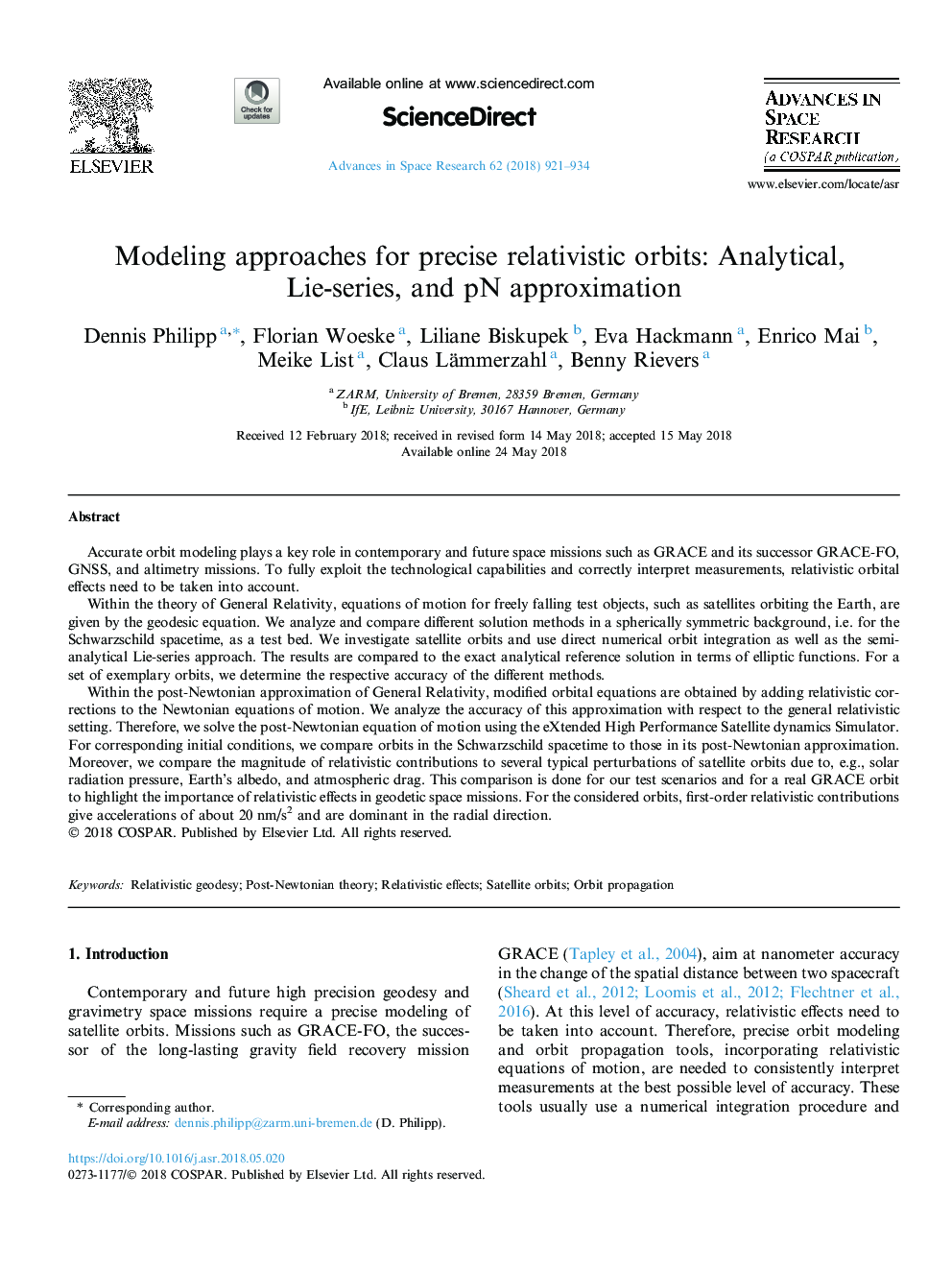| Article ID | Journal | Published Year | Pages | File Type |
|---|---|---|---|---|
| 8131701 | Advances in Space Research | 2018 | 14 Pages |
Abstract
Within the post-Newtonian approximation of General Relativity, modified orbital equations are obtained by adding relativistic corrections to the Newtonian equations of motion. We analyze the accuracy of this approximation with respect to the general relativistic setting. Therefore, we solve the post-Newtonian equation of motion using the eXtended High Performance Satellite dynamics Simulator. For corresponding initial conditions, we compare orbits in the Schwarzschild spacetime to those in its post-Newtonian approximation. Moreover, we compare the magnitude of relativistic contributions to several typical perturbations of satellite orbits due to, e.g., solar radiation pressure, Earth's albedo, and atmospheric drag. This comparison is done for our test scenarios and for a real GRACE orbit to highlight the importance of relativistic effects in geodetic space missions. For the considered orbits, first-order relativistic contributions give accelerations of about 20â¯nm/s2 and are dominant in the radial direction.
Related Topics
Physical Sciences and Engineering
Earth and Planetary Sciences
Space and Planetary Science
Authors
Dennis Philipp, Florian Woeske, Liliane Biskupek, Eva Hackmann, Enrico Mai, Meike List, Claus Lämmerzahl, Benny Rievers,
